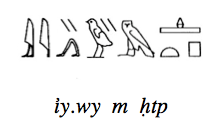
WELKOM IN VREDE
Verklaring van enkele begrippen
Beschrijvingen van enkele historische plaatsen
Day 6, mondag 4 december 2017.Program today: Giza with the pyramids, the Sphinx, the boat of Khufu as well as various tombs and at the end the Egyptian museum in Cairo.Just like the other days it was pretty foggy now when we got in the car at 7 o'clock. The intention was to first pay a short visit to Abu Rawash to see the remains of the pyramid of Djedefre, but despite asking many people and because of the fog, we did not succeed unfortunately and at 9 o'clock we headed for the Giza plateau.
The pyramids at Giza are among the most famous buildings of humanity.
My goal was mainly to finally visit the pyramid of Chefren since it was closed in 2012. I also wanted to take pictures again in the pyramid of Menkaure because in 2012 they had become rather dusty.
On the way to the pyramid of Menkaure, we first stopped for a few pictures of pyramids in the fog, because thats something you do not see every day.
Then we first came to another tomb, alerted by a guard that it was also open. Seshemnefer IV (Sšm-nfr) was the Head of the royal harem, meaning that he was the manager of that part of the palace in which the wives and children of the royal family lived. Also, a list on which his titles stand, survived the test of time and we know that he was an important person at the court, who was trusted by his king. The remaining reliefs provide insight into daily life in his time, including agriculture, animal husbandry, bird hunting, grain storage as well as clothing, sacrificial rituals and, to a certain extent, the everyday language. The tomb was excavated between 1842 and 1845 by a team lead by Karl Richard Lepsius, recently the tomb was completely restored and opened to the public.
Although there are not so many beautiful decorations present, this tomb is also worth a look. Now up to the pyramid of Menkaure.
The pyramid of Menkaure is the smallest of the three pyramids on the Giza plateau. It is thought that this pyramid was built to serve as a tomb for the pharaoh Menkaure of the fourth dynasty.
If you want to see the photos taken in 2012, click here. The next target was the museum with the boat of Cheops.
The museum, constructed in 1985, is entirely dedicated to the Solarboat of Cheops. It is built next to the great pyramid of Cheops. The museum is equipped with modern techniques and technology for the preservation of the Solarboat. The museum is only a few meters from where the boat was found, near the southern part of the pyramid.
Still cool to see how well they could build a boat at that time.
Henutsen is the name of the second or third wife of Pharaoh Cheops. Little is known about Henutsens life, some scholars believe she was the daughter of pharaoh Sneferu, but that is not generally accepted. She is also not known as a king's mother.
That was a pleasant surprise. Now on to the mastaba of Meresankh III.
Queen Meresankh III was the daughter of Hetepheres II, a daughter of Cheops and Prince Kawab, the eldest son of Cheops and a granddaughter of Cheops, her parents were brother and sister.
Incomprehensible that no more people come here to watch, because the tomb is very beautifully decorated, but it will probably have to do with the rest of the imposing buildings present here. The last thing I had to do and what you should not miss here is a visit to the sphinx.
The Sphinx of Giza is the largest and most famous image of a sphinx in the world. It stands at the three great pyramids in Giza with its back to the pyramid of Chefren. There is still much unclear about the construction and the origin of the sphinx, there is so much speculation about it, there would also be spaces under the sphinx, which have not yet been explored, at least as far as we know, perhaps there will be clarity about this during our lives..........
It remains a magnificent and imposing object, appealing to the imagination.
To get there we had to go straight through Caìro and that is not easy considering the hectic traffic with a cacophony of car horns, but after a good hour we arrived at the museum. They are busy transferring parts of the collection to the new museum, leaving room to exhibit things that we would never see otherwise, such as a large part of the collection from Toetankhamon's grave, I'm very curious.
Great, I am also curious how the new museum will look like when it is opened next year.
|
Verklaring van enkele begrippen
Beschrijvingen van enkele historische plaatsen


